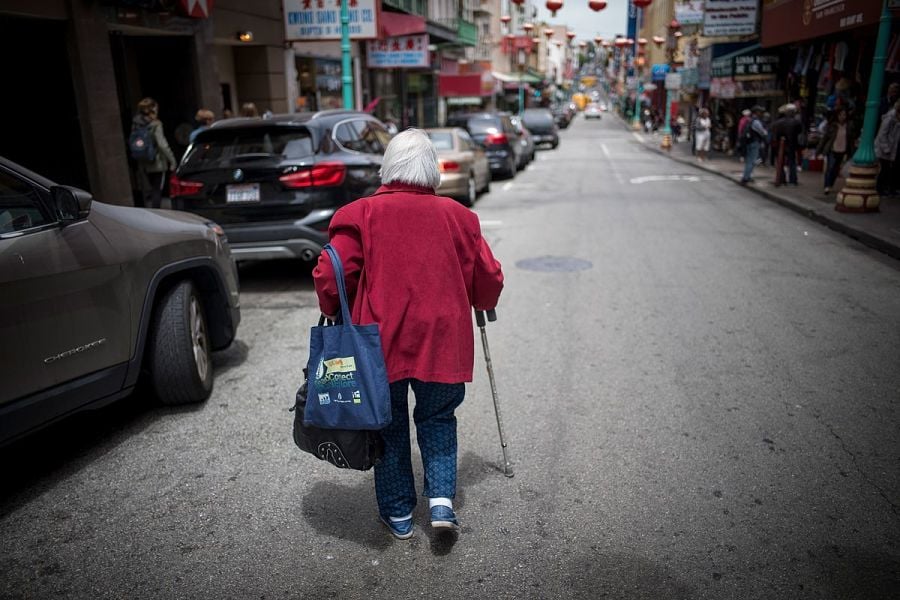

With approximately 2,700 rules governing Social Security benefits, it’s understandable that mistakes occur in such a complex system that provides benefits to about 68 million people, including retired and disabled workers and their eligible dependents and survivors. But mistakes can be costly.
A new internal audit report released last Tuesday by the Social Security Administration’s Office of Inspector General revealed that more than 15,000 widows and widowers who are currently collecting retirement benefits on their own earnings record are entitled to receive larger benefits as survivors.
An individual can be dually entitled to Social Security retirement benefits based on his or her own work history and to widow’s or widower’s benefits based on the earning of a deceased spouse or deceased ex-spouse.
Such dually entitled beneficiaries can choose to collect one type of benefit first and switch to the other type of benefit later if it would result in a larger benefit. But if they don’t choose wisely, it can result in a severe underpayment of benefits.
Individuals are entitled to survivor benefits if they were married for at least nine months at the time of the worker’s death. A divorced spouse who was married for at least 10 years and who is single — or who waited until at least age 60 to remarry — is entitled to survivor benefits if an ex-spouse dies.
Normally, when a beneficiary is entitled to spouse’s benefits and the wage earner dies, the spouse’s benefit is automatically converted to survivor benefits. But problems can arise if a widow or widower was collecting retirement benefits on their own earnings record.
The purpose of the new OIG report was to determine whether there were individuals who may have been eligible for, but not receiving, higher widow or widower’s benefits. Auditors identified 30,768 individuals receiving retirement benefits as of January 2019 who might be eligible for additional survivor benefits and then selected 100 of those cases for further review. They determined that nearly half of cases were eligible to receive larger survivor benefits.
“We estimate 15,076 retirement beneficiaries were eligible for $193.8 million in widow(er)’s benefits as of September 2019,” the report said. Furthermore, it estimated that 12,615 of these beneficiaries could lose an additional $530.9 million in widow or widower’s benefits over their lifetimes.
“Generally, when a claimant files an application, SSA staff must explore all benefits for which they are potentially entitled, including other types of benefits or entitlement on another record,” the report said. Although the agency performs an annual process to identify and notify beneficiaries receiving widow or widower’s benefits who are eligible for higher retirement benefits based on their own earnings, SSA should establish a similar process to identify and notify retirement beneficiaries who are potentially eligible for a higher widow or widower’s benefit, the auditors concluded.
The OIG report recommended that the Social Security Administration evaluate improvements needed for its quality reviews, clarify instructions to SSA employees and develop additional processes to identify retirement beneficiaries who are potentially eligible for widow or widower’s benefits. SSA agreed with all of the recommendations.
This is not the first time I've covered the problems encountered by beneficiaries who are dually entitled to both retirement benefits on their own earnings record and as a survivor benefit.
In 2018, I wrote about another internal audit showing that in the majority of cases, the Social Security Administration did not inform widows and widowers of their option to claim survivor benefits initially and delay applying for their own retirement benefit until age 70, when those benefits would be worth more than their survivor benefit.
In that 2018 report, the inspector general found that 82% of beneficiaries who were dually entitled to survivor benefits and their own retirement benefits would have received a higher monthly amount if SSA had informed them of the option to delay their retirement benefit application until age 70.
The amount of a survivor benefit depends on the widow’s or widower’s age at the time they collect benefits. Reduced survivor benefits are available as early as age 60 (50 if the surviving spouse is disabled), but they are worth just 71.5% of the deceased worker’s benefit, compared to 100% if the surviving spouse claims benefits at full retirement age or later.
Survivor benefits do not increase if collected after full retirement age. Unlike retirement benefits, which grow by 8% per year for every year benefits are postponed beyond full retirement age up to age 70, survivor benefits are worth the maximum amount if collected at full retirement age.
This is another cautionary tale for financial advisers. Widows and widowers have more claiming options than other Social Security beneficiaries. Knowing when and how to claim retirement and survivor benefits can make a huge difference to your clients’ retirement income.

Relationships are key to our business but advisors are often slow to engage in specific activities designed to foster them.

Whichever path you go down, act now while you're still in control.

Pro-bitcoin professionals, however, say the cryptocurrency has ushered in change.

“LPL has evolved significantly over the last decade and still wants to scale up,” says one industry executive.

Survey findings from the Nationwide Retirement Institute offers pearls of planning wisdom from 60- to 65-year-olds, as well as insights into concerns.
Streamline your outreach with Aidentified's AI-driven solutions
This season’s market volatility: Positioning for rate relief, income growth and the AI rebound
